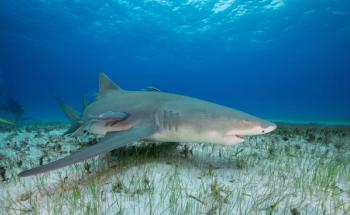
Thoracic imaging (Proceedings)
Recognizing that thoracic radiography is the first diagnostic imaging step for dogs and cats with thoracic disease, there is a lot more to thoracic imaging than radiographs. In specific circumstances additional modalities which may be considered include ultrasound, computed tomography (CT), fluoroscopy and nuclear scintigraphy.
This lecture is designed as an overview of the various modalities available for thoracic imaging, and their specific utility. Recognizing that thoracic radiography is the first diagnostic imaging step for dogs and cats with thoracic disease, there is a lot more to thoracic imaging than radiographs. In specific circumstances additional modalities which may be considered include ultrasound, computed tomography (CT), fluoroscopy and nuclear scintigraphy. A complete description of the technical aspects, and interpretation of these modalities is beyond the scope of the presentation, however the reader is provided with a brief synopsis below.
Thoracic radiography:
- Standard orthogonal or three-view thoracic radiographs
- When to consider DV vs. VD?
- Systematic evaluation of the entire thorax:
Thoracic ultrasound
Indications
- to evaluate the mediastinum in cases of suspected mediastinal mass
- evaluation of masses at the periphery of the lung, or involving the chest wall
- guidance for aspiration of masses in the mediastinum, lung periphery or chest wall
- diagnosis of pneumothorax in the setting of thoracic trauma (i.e. TFAST)
Thoracic ultrasound is not useful in animals with centrally located lung masses or to image lung lesions in the presence of pneumothorax.
Advantages:
- affordable
- well tolerated (+/- sedation)
- imaging yield may be improved in the presence of residual pleural effusion
Disadvantages:
- relative inability to view within the lung due to air artifacts
- only able to evaluate a relatively small window of the chest at once
Thoracic computed tomography
- Detailed anatomic describes of the normal canine and feline thorax by conventional CT ( IV contrast) have been provided
- Protocols for helical and high-resolution CT have also been developed for the canine lung
CT modalities available:
- Conventional CT:
- Helical CT: Advantages include....
- High-resolution CT:
- Heart
- Great vessels (MPA, aorta and caudal vena cava)
- Pulmonary parenchyma
- Pulmonary vasculature
- Pleural space
- Chest wall
- Extra-thoracic structures
- Contiguous images obtained without interscan delay
- Improved spatial resolution
- Shorter examination time
- Performed with thick collimation (slice thickness)
- Poor spatial resolution
- Long examination times, and hence motion artifact
- Not particularly useful for thoracic imaging
- Slice thickness of 1-2mm
- Maximizes spatial resolution (by using a tightly collimated x-ray beam), high kV and mA, decreased field of view and special reconstruction algorithms)
- Close to vascular structures
- Not well identified with ultrasound (i.e. surrounded with air), fluoroscopy or radiography
- Zone 1 = pleural region
- Zone 2 = subpleural region (measuring in diameter 5% of the maximum lobar width)
- Zone 3 = peribronchovascular region (i.e. remainder of the lung parenchyma)
- Linear and reticular opacities
- Nodules and nodular opacities
- Increased lung opacity
- Decreased lung opacity
Indications for thoracic CT:
- Improve detection of subtle pulmonary lesions
- Differentiate thoracic masses from accumulations of mediastinal or pleural fluid
- Evaluate the mediastinum or thoracic wall
- To assess for the presence of foreign material
- To guide fine-needle aspirates and/or tissue-core biopsies of intrathoracic lesions, specifically lesions:
In human medicine, high-resolution CT has become the gold standard diagnostic modality for evaluating diffuse lung disease, detecting pulmonary metastasis and further characterizing small pulmonary lesions.
Advantages of CT:
- No superimposition of structures
- Enhanced resolution
- Smaller structures visible
- Improved sensitivity for pulmonary metastatic disease
- Multiplanar reconstructions
- Angiography
Disadvantages of CT:
- Higher radiation dose than radiographs
- Subject size is limited (not a problem for dogs and cats)
- Ideally requires control of ventilation for thoracic studies (i.e. anesthesia and intubation)
- Artifacts
- Expensive
- Limited availability (although improving)
Classification system for high-resolution CT in dogs:
- Adapted from human classification system
- Lung is divided into 3 zones, each of which is inspected for abnormalities:
- Abnormalities are classified into four groups:
■ Lung opacity can be assess objectively by comparing Hounsfield units (HU) values with normal dogs
- Within these groups, precise descriptive terms are used for specific abnormalities identified
Technical considerations:
- requires anesthesia and application of positive end-expiratory pressure (PEEP) in order to prevent lung collapse
Fluoroscopy
- generally indicated for real-time evaluation of the upper airways (especially in the diagnosis of tracheal collapse)
- also used to guide tracheal stent placement for the treatment of advanced tracheal collapse
Nuclear scintigraphy
Indications:
- evaluate for evidence of ectopic thyroid tissue within the chest
- ventilation-perfusion scans for the diagnosis of pulmonary thromboembolism (PTE)
Advantages:
- non-invasive
- anesthesia not required, although usually light sedation is needed to keep the patient still during the scan
References available upon request.
Newsletter
From exam room tips to practice management insights, get trusted veterinary news delivered straight to your inbox—subscribe to dvm360.






